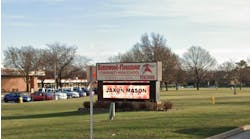Lightning is the most dangerous and frequently encountered weather hazard. Even though tornadoes and hurricanes grab the headlines, according to the National Severe Storms Laboratory, lightning kills roughly 100 individuals a year and seriously injures another 500To protect your students and staff:
-Develop lightning-safety guidelines. The random nature of thunderstorms cannot guarantee an individual or group absolute protection from lightning strikes; however, being aware of and following proven lightning-safety guidelines can reduce the risk of injury or death.
Schools need to warn all persons involved of the lightning danger. People need to know what to do when the threat of lightning is present. Being on a soccer field, golf course or in a swimming pool as a thunderstorm approaches can have deadly consequences. School guidelines should contain useful information about what to do if a person is struck by lightning.
-Educate staff, students and patrons. Adults must take responsibility for the safety of children in their care during a thunderstorm. Taking appropriate action when a thunderstorm threatens can prevent many lightning casualties. Educating students, staff and patrons about the myths and reality of lightning strikes is instrumental in reducing the number of lightning victims.
-Use a proven lightning-detection system. Meeting the first requirement-warning people-means using some form of proven lightning-detection technology, such as an Electrical Storm Identification Device (ESID). Relying on visual signs of thunderstorm development is hazardous due to limitations of human observation, according to the National Weather Service. Lightning has been detected as far as 10 miles from the edge of a thunderstorm cell, and at locations with blue skies overhead. Often, these types of lightning strikes are falsely referred to as "bolts out of the blue." In fact, a lightning strike is always connected to a thundercloud and cannot be generated in clear skies. It is critical to remember that this long, arching lightning discharge is a rare event and cannot be predicted. The thunderstorm that generates a so-called "bolt out of the blue" can be detected by lightning sensors in time to issue a warning.
-Provide instant access to weather information. Coaches and other school employees can avoid panic during the time-consuming process of evacuating sports fields and play areas when a lightning threat already exists. Using a weather-alert radio and/or weather-service provider, and lightning sensors like the ESID, can enhance warning time during the initial stages of a storm by detecting lightning events, determining the storm's proximity to the area of concern and forecasting the storm's arrival.
The Blue Valley School District, Overland Park, Kan., instituted a two-tier lightning-alarm procedure, where school district staff are notified via an alphanumeric pager once lightning is detected within 10 miles (lightning alert), and a second warning is issued once lightning is reported within five miles (lightning warning). This notification occurs almost instantly when the on-site ESID lightning-detection system records a cloud-to-ground event in the preset range and initiates a call to the paging network of the school district. District staff also are notified via their pagers when it is safe to resume activities based on no lightning events detected for 15 minutes within five or 10 miles.

